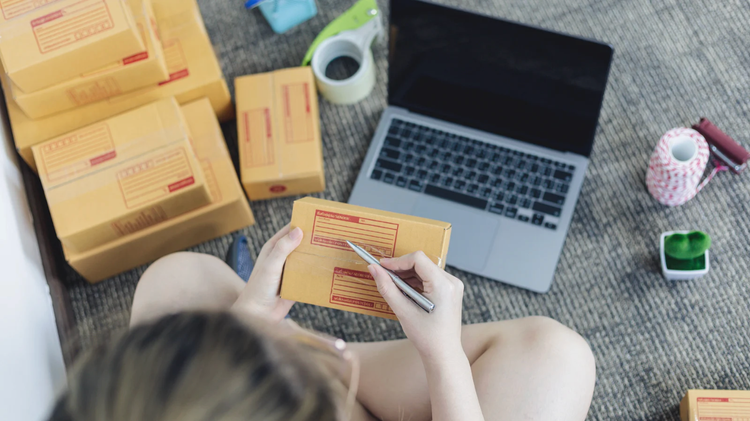Making Smart Packaging Decisions: How to Use Data to Choose the Right Option

In Part 1, we explored how packaging choices impact everything from brand perception and customer experience to shipping costs and theft risks. But how do you actually decide on the best packaging for your business?
Instead of guessing or going with the cheapest or most attractive option, data-driven decision-making can help you choose packaging that:
- Keeps costs under control
- Enhances the customer experience
- Reduces shipping fees
- Prevents unnecessary losses due to damage or theft
In this post, we will walk through how to:
- Define what you need from your packaging
- Track the right data points before making a change
- Test and compare different packaging options without costly mistakes
- Adjust based on real-world results
By the end, you will know exactly how to choose packaging that works for your business and bottom line.
Step 1: Define What You Need From Your Packaging
Before you dive into costs, branding, or shipping logistics, start with one simple question:
What is the most important thing your packaging needs to do?
For example, your priority might be:
- "I want packaging that makes my brand stand out and encourages repeat purchases." → You may need high-quality, branded packaging.
- "I need to keep costs low, so I want the cheapest option that still protects my product." → You should focus on cost-effective, durable materials and efficient sizing.
- "Too many of my packages are being stolen. I need a safer option." → Unbranded, discreet packaging might be the smarter choice.
- "Shipping costs are too high. I need to optimise package size and weight." → You should explore lightweight materials and right-sized packaging to avoid unnecessary fees.
- "My customers often buy multiple items per order, and I need flexible packaging that fits different sizes and quantities." → Having a range of package sizes will be key to reducing excess space and shipping costs.
Once you have defined your goal, you can start collecting the right data to guide your decision.
Step 2: Gather the Right Data
To make the best packaging decision, track a mix of financial information, customer feedback, and operational insights.Key Packaging Metrics to Monitor
Step 3: Test Packaging Without Making Costly Mistakes
Some people may advise you to A/B test packaging options (test and try out different options in a controlled way), but there are limitations to consider, such as minimum order quantities (MOQs) and packaging lead times. Most packaging suppliers require bulk purchases, so switching between different types on a small scale can be tricky.
However, you can still test your options without overcommitting or disrupting fulfilment. Here’s how:
1. Get Packaging Samples First
Most suppliers offer samples of different packaging options so you can physically test them before placing a large order. Use samples to:
- Compare material quality (durability, waterproofing, weight)
- Check how branding appears (print clarity, embossing, colours)
- Ensure products fit properly (no excess space, no risk of damage)
- Test unboxing experience (ease of opening, premium feel)
Pro Tip: Order from a competitor to see how their packaging compares!
2. Conduct a Small-Scale Trial (If MOQ Allows)
If your supplier offers lower minimum order quantities, you can run a controlled test by using different packaging types on a percentage of your orders.
For example:
- Send 30% of orders in branded packaging and 70% in plain packaging
- Test waterproof vs. non-waterproof options for fragile products
- Ship bulk orders in flexible mailers vs. rigid boxes
Then, track costs, shipping efficiency, and customer feedback using packaging cost, return rate, and customer sentiment tracking before committing to a large-scale change.
3. Use Customer Surveys & Reviews for Quick Feedback
If testing different packaging directly isn’t feasible, you can still gather customer insights to make an informed choice.
Try asking:
- "Did you feel the packaging enhanced your experience?"
- "Would you be happy with simpler packaging if it meant lower prices?"
- "Did your order arrive safely?"
- "Are you able to recycle the packaging?"
Tracking responses over time helps determine whether premium or budget-friendly packaging aligns better with customer expectations.
4. Factor in Lead Times to Avoid Fulfilment Delays
Switching packaging isn’t just about costs – it also affects your ability to fulfil orders on time.
Before making a change, check:
- How long will it take to receive new packaging orders?
- Will switching cause delays if packaging stock runs out before new packaging arrives?
- Do I need to order in bulk, or can I maintain smaller inventory levels?
Pro Tip: If switching to a new packaging type, overlap inventory for a short period to avoid fulfilment disruptions.
Step 4: Analyse & Adjust Based on Results
Once you've tested different packaging types, look at the data and ask:
- Did the new packaging reduce costs? (Check "Packaging Costs" in expense tracking)
- Did customers react positively? (Review support tickets & customer feedback)
- Was there a difference in lost, stolen, or refunded packages? (Compare claims & returns)
- Did the packaging impact fulfilment times? (Track processing times)
- Are orders being delivered safely? (Monitor return rates & complaints)
For example:
- If switching to a smaller box saves £1.50 per order in shipping without increasing damages, it’s a smart move.
- If branded packaging increases theft rates but boosts repeat purchases, you might keep it for VIP customers only.
With automated tracking in Cloudfo, you can easily spot patterns, compare periods, and make adjustments as needed.
Final Thoughts: Small Packaging Tweaks = Big Profit Gains
Many business owners overlook packaging as a small detail, but it can have a major impact on costs, customer satisfaction, and overall profitability.
By tracking key packaging costs, return rates, and margins, you can make informed decisions that enhance your brand while keeping your bottom line strong.
Key Takeaways:
- Track packaging costs, fulfilment expenses, and margins to compare options
- Order samples before committing to bulk orders
- Use small-scale tests, surveys, and reviews to gauge customer perception
- Monitor return rates & theft claims to spot potential issues
- Adjust packaging choices based on actual financial impact over time
By keeping an eye on the numbers, you can confidently choose packaging that works for both your customers and your cash flow.




